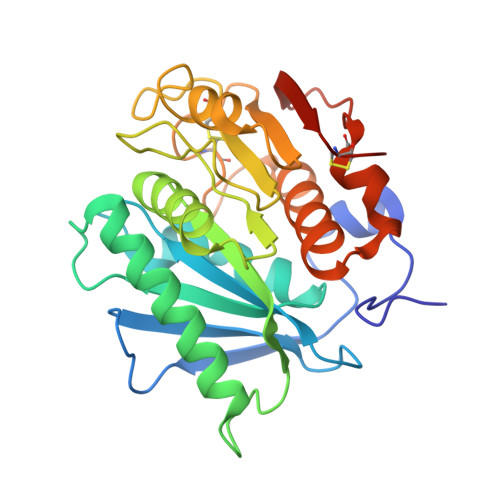Ancestral Sequence Reconstruction Identifies Structural Changes Underlying the Evolution of Ideonella sakaiensis PETase and Variants with Improved Stability and Activity.
Joho, Y., Vongsouthi, V., Spence, M.A., Ton, J., Gomez, C., Tan, L.L., Kaczmarski, J.A., Caputo, A.T., Royan, S., Jackson, C.J., Ardevol, A.(2023) Biochemistry 62: 437-450
- PubMed: 35951410
- DOI: https://doi.org/10.1021/acs.biochem.2c00323
- Primary Citation of Related Structures:
8CRU - PubMed Abstract:
The improved production, recycling, and removal of plastic waste, such as polyethylene terephthalate (PET), are pressing environmental and economic issues for society. Biocatalytic (enzymatic) PET depolymerization is potentially a sustainable, low-energy solution to PET recycling, especially when compared with current disposal methods such as landfills, incineration, or gasification. IsPETase has been extensively studied for its use in PET depolymerization; however, its evolution from cutinases is not fully understood, and most engineering studies have neglected the majority of the available sequence space remote from the active site. In this study, ancestral protein reconstruction (ASR) has been used to trace the evolutionary trajectory from ancient serine hydrolases to IsPETase, while ASR and the related design approach, protein repair one-stop shop, were used to identify enzyme variants with improved activity and stability. Kinetic and structural characterization of these variants reveals new insights into the evolution of PETase activity and the role of second-shell mutations around the active site. Among the designed and reconstructed variants, we identified several with melting points 20 °C higher than that of IsPETase and two variants with significantly higher catalytic activity.
- Manufacturing, Commonwealth Scientific and Industrial Research Organisation, Clayton, Victoria 3168, Australia.
Organizational Affiliation:

















